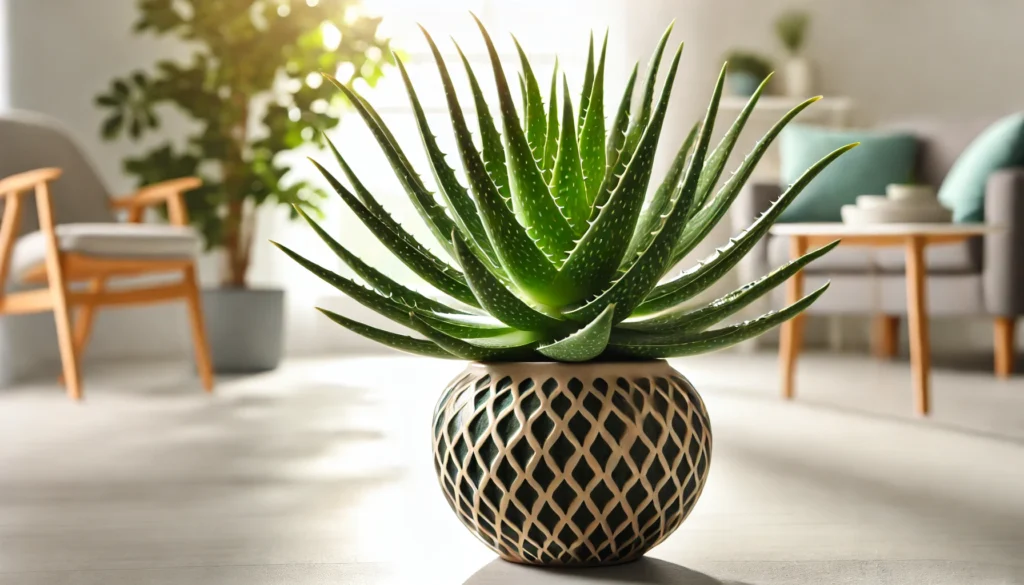
The Fatsia plant, also known as Fatsia japonica or Japanese Aralia, is a striking houseplant known for its large, glossy leaves and robust growth. Let’s explore the characteristics of this plant and how to care for it effectively to enjoy its full splendor in your home.
Description and Size
The Fatsia plant is admired for its large, palmate leaves that can grow up to 12 inches across. These leaves have a glossy finish and are typically a deep green, though variegated varieties exist. Indoors, the Fatsia can reach a height of 3-6 feet, providing a lush, tropical feel to any space.
History and Natural Habitat
Native to the subtropical regions of Japan, South Korea, and Taiwan, the Fatsia plant thrives in mild, humid environments. It has been cultivated for centuries for its ornamental value and is commonly found in gardens and homes around the world.
Ideal Growing Conditions
Light
The Fatsia plant prefers bright, indirect light but can tolerate lower light conditions. Avoid direct sunlight, which can scorch its leaves. A spot near a north or east-facing window is ideal.
Temperature and Humidity
This plant thrives in temperatures between 60-75°F (16-24°C). It prefers moderate to high humidity levels, so consider using a humidifier or placing the plant on a humidity tray if the air in your home is dry.
Soil
A well-draining potting mix is essential for the Fatsia plant. A mix of peat, perlite, and pine bark works well, ensuring the soil stays moist but not soggy.
Watering
Water your Fatsia plant thoroughly, allowing the top inch of soil to dry out between waterings. Overwatering can lead to root rot, while underwatering can cause the leaves to wilt and brown. Aim for consistent moisture without letting the plant sit in water.
Toxicity
The Fatsia plant is non-toxic to both pets and humans, making it a safe choice for households with curious animals and children.
Common Problems and Solutions
Yellow Leaves
- Cause: Overwatering is the most common cause of yellow leaves.
- Solution: Allow the soil to dry out between waterings and ensure proper drainage.
Brown Leaf Tips
- Cause: Low humidity or underwatering can cause the tips of the leaves to turn brown.
- Solution: Increase humidity around the plant and ensure consistent watering.
Pests
- Common Pests: Spider mites, aphids, and scale insects can affect the Fatsia plant.
- Treatment: Use insecticidal soap or neem oil to treat infestations. Regularly inspect your plant to catch and address issues early.
Diseases
- Root Rot: Caused by overwatering and poor drainage. Ensure the soil is well-draining and allow it to dry out slightly between waterings.
- Leaf Spot: Fungal infections can cause brown spots on leaves. Improve air circulation and avoid overhead watering to keep the leaves dry.
Best Practices for Care
- Repotting: Repot every 2-3 years to refresh the soil and provide more space for growth. Spring is the best time for repotting.
- Fertilizing: Feed your plant with a balanced, water-soluble fertilizer every 4-6 weeks during the growing season (spring and summer).
- Pruning: Trim any dead or yellowing leaves to maintain the plant’s health and appearance. Pruning also helps to promote new growth.
Overall Ease of Care
The Fatsia plant is a fantastic choice for plant lovers of all levels. Its adaptability to various light and humidity conditions, coupled with its relatively low maintenance needs, makes it an easy-to-care-for plant. Its bold, tropical appearance adds a touch of elegance to any indoor space.
In conclusion, the Fatsia plant is a beautiful, low-maintenance addition to your home. With the right care and attention, it will thrive, providing lush greenery and a sense of tropical tranquility to your indoor garden.



